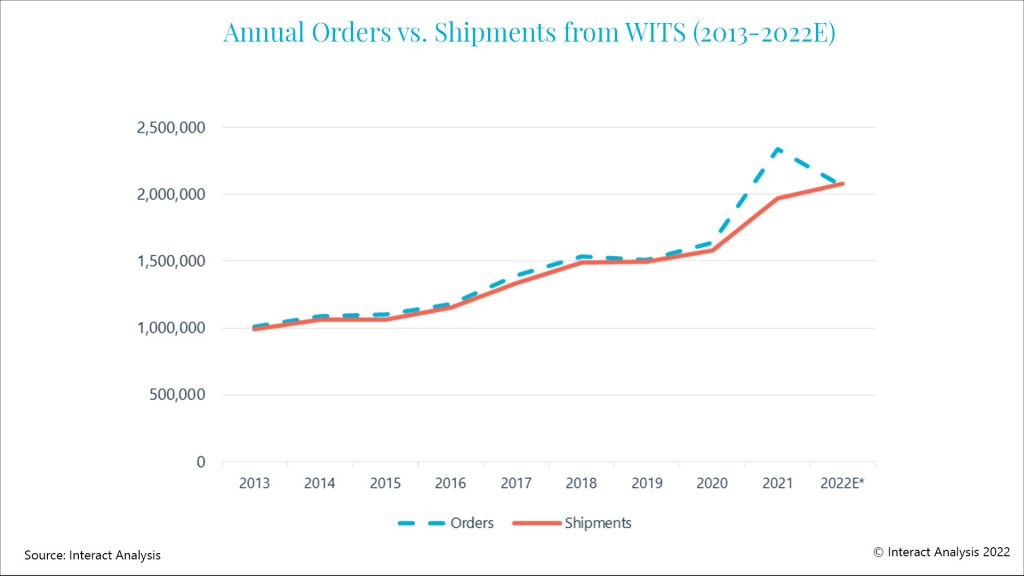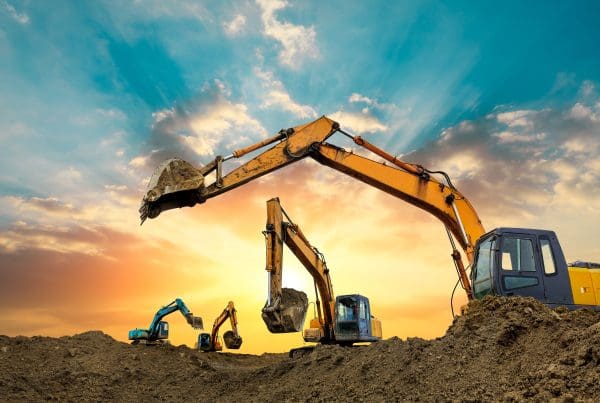商用车
2022-10-17
全球叉车市场的长期增长态势仍然乐观

MAYA XIAO
Maya在电动汽车、自动化系统和机器人领域拥有跨学科的技术背景,现担任Interact Analysis的研究经理,负责锂离子电池、叉车、工业和协作机器人市场等研究。
This insight is the second in a series looking at how the current geopolitical and economic climate is impacting the forklift market. If you haven’t already read it, check out the first one here. In this new insight we at how the forklift market is responding to these problems.
Forklift shipment growth had plateaued to some extent as fears of a recession in 2019 led companies to tighten their purse strings. The growth curve of sales and orders has reached a meeting point in 2019. Had there been no COVID-19 pandemic, the global forklift market would have entered an upward cycle from 2019 Q4, the order-intake volume in 2019 Q4 had started rising. Then, in 2020 Q1, COVID-19 hit, and orders declined rapidly, after which China in particular experienced a strong rebound in the second quarter. Although order intake rose at that point, shipment growth stalled due to delays in project completions and supply chain constraints. Since the pandemic, this gap between shipments and orders has widened as companies struggle to catch up with the backlog.

The market received a welcome boost in order growth in 2021 before declining slightly whilst suppliers caught up with order backlog
Economic woes
Since then, the market has had to cope with many other problems, as well as the aftereffects of the pandemic. The Ukraine conflict, inflationary pressures and supply chain woes have all had a particularly strong impact. As a result, projected growth in the forklift market is now 4.6% for 2022 (compared to our original 8.1% forecast). Perhaps the most prominent impact that the Ukraine war has had is on raw materials, with exponential rises in the prices of metals such as nickel, as well as oil, gas and coal. Nickel is one of the main materials used in the production of EV batteries, so this is having a major knock-on effect on the price of forklifts. Furthermore, supply chain disruption has rocked the European market leading to prolonged delivery times, and companies are generally cutting spending in preparation for what seems likely to be a generally challenging economic environment in the near future.
The recent Chinese COVID-19 lockdowns which began in March have been another big issue. These saw huge numbers of factories close their doors, and a plunge in the consumer market. The impacts of these recent lockdowns were arguably worse than the impacts of the original 2020 lockdowns, largely because Shenzhen and Shanghai, the two main port cities and also massive manufacturing centres, were completely shut down, causing chaos in the supply chain. To illustrate the scale of what this meant, we can look at GDP: these two cities alone were worth 6.4% of Chinese GDP in 2021. In the long run, though, and despite the devastating impact this lockdown period has had on China’s manufacturing industry, the outlook does remain positive. And the booming e-commerce market, along with rising demand for automation equipment, will boost the growth of forklift sales considerably.
Looking to the future
Looking out to 2030, the outlook for the forklift sector remains stable. Whilst the market gets back on its feet, 2022 and 2023 will be a slow couple of years where growth projections will decline slightly. But demand from the logistics sector and promotion of autonomous driving technology will boost the demand for forklifts and also help to alleviate labor shortages. Although the Chinese market, which makes up a considerable portion of the forklifts sector, has had a grim 2022, the outlook remains positive, and the forecast has not changed dramatically. The global forklift market will maintain a 5.9% CAGR out to 2027, and the e-commerce and logistics sectors will continue to be the most important drivers for the forklift market, playing a critical role in boosting shipment growth.
The most up to date version of the forklift market report will be published in November 2022. For more information on how to get your hands on a copy of this, please contact Maya Xiao, Senior Analyst for more information.
其他商用车领域洞察

非道路领域是否已迎来高性能计算平台时代?

2024年,巴西挖掘机进口五倍于出口
